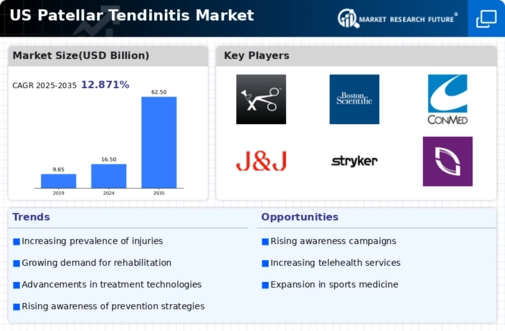US Patellar Tendinitis Market Summary
The US Patellar Tendinitis market is projected to experience substantial growth from 16.5 USD Billion in 2024 to 62.5 USD Billion by 2035.
Key Market Trends & Highlights
US Patellar Tendinitis Key Trends and Highlights
- The market is expected to grow at a compound annual growth rate (CAGR) of 12.87% from 2025 to 2035.
- By 2035, the market valuation is anticipated to reach 62.5 USD Billion, indicating a robust expansion.
- In 2024, the market is valued at 16.5 USD Billion, reflecting a strong starting point for future growth.
- Growing adoption of advanced treatment options due to increasing awareness of patellar tendinitis is a major market driver.
Market Size & Forecast
| 2024 Market Size | 16.5 (USD Billion) |
| 2035 Market Size | 62.5 (USD Billion) |
| CAGR (2025-2035) | 12.87% |
Major Players
Smith and Nephew, Arthrex, K2M Group Holdings, Medtronic, Boston Scientific, Conmed, DePuy Synthes, MicroPort Scientific, Stryker, NuVasive, Patterson Companies, Orthofix, Johnson and Johnson, Zimmer Biomet




















